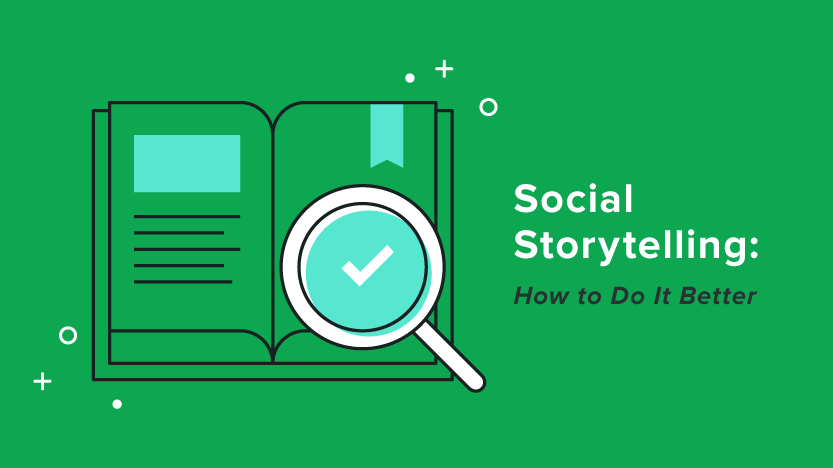
Social Storytelling: How to Do It Better
Who is my “built for you”? Who is my audience?Often, the problem that brands have marketing themselves is not how good their product is or even how promising their marketing plan is. The barrier to connecting with audiences is failing to answer these questions clearly and specifically:
- How do I get my idea into my audience’s head?
- How do I change the way my audience thinks?
- How do I change the way my audience behaves (ahem, buys)?
These are great questions to surface during your next campaign planning session. The bottom line for social marketers here is: to change the way your audience behaves, no matter what your goal is as a brand, you must change the way they feel and think.
Your Audience
Many brands fall into the trap of choosing too broad an audience. My first tip here is to get as specific as possible with your marketing personas. Social listening solutions can help you do this.

The more targeted the audience you have, the easier and more effective your work as a social marketer will be.
Once you’ve drilled down on the specific identities and proclivities of your audience(s), it’s time to get clear on each audience’s goal. What is the thing this audience wants that your brand will help them get?
Your Audience’s (New) Problems
Now that you understand your audience on a fundamental level, you can understand their problems. But don’t find just any problem. Don’t find the problem that all your competitors have found. Find the problem that your audience couldn’t see before, and aggressively go after both highlighting and prescribing the answer to that problem.

Make the pain of the status quo seem more painful than pain of acting.
Choose the Right Distribution Channels
And double down on them. Use social analytics to identify the most robust social channels for your audience and product-relevant conversation.

Then be strategic about how you use these channels, and only focus on the channels where this conversation is already happening. This is especially important when you have limited resources for both content development and ads (which most of us do). Meet your audience where they are.
Think of it this way: You could have the best water in the world, but if it’s flowing through a leaking pipe, no one will ever taste it.
Use This Framework
This framework can help you tell better stories on social.
- What’s the goal of your campaign and/or strategy?
- What is the problem you solve? How can you tell that story?
- What idea do you want to replace in your audience’s heads?
- What change do you want to make?
Remember that the buying process is inherently emotional for every human being. Education is key, and delivering facts is important, but, ultimately, it’s changing the way people think and feel that will put the dollars in your brand’s bank and increase awareness, adoption, and advocacy for your brand.
Make Big Bets on Fewer Things
Most social marketers and brands pump out a ton of content, much of which is not valuable to their audiences. Instead, make big bets on fewer things: fewer pieces of content, fewer messages, fewer campaigns.

For example, if you are a B2B brand, put over half your time and promotion resources into a major industry study. If you are an eCommerce brand, put half your time and promotion resources into a particular photo shoot, video campaign, or narrative. Look at the analytics often to understand what’s working and what’s not so you can swiftly pivot.






